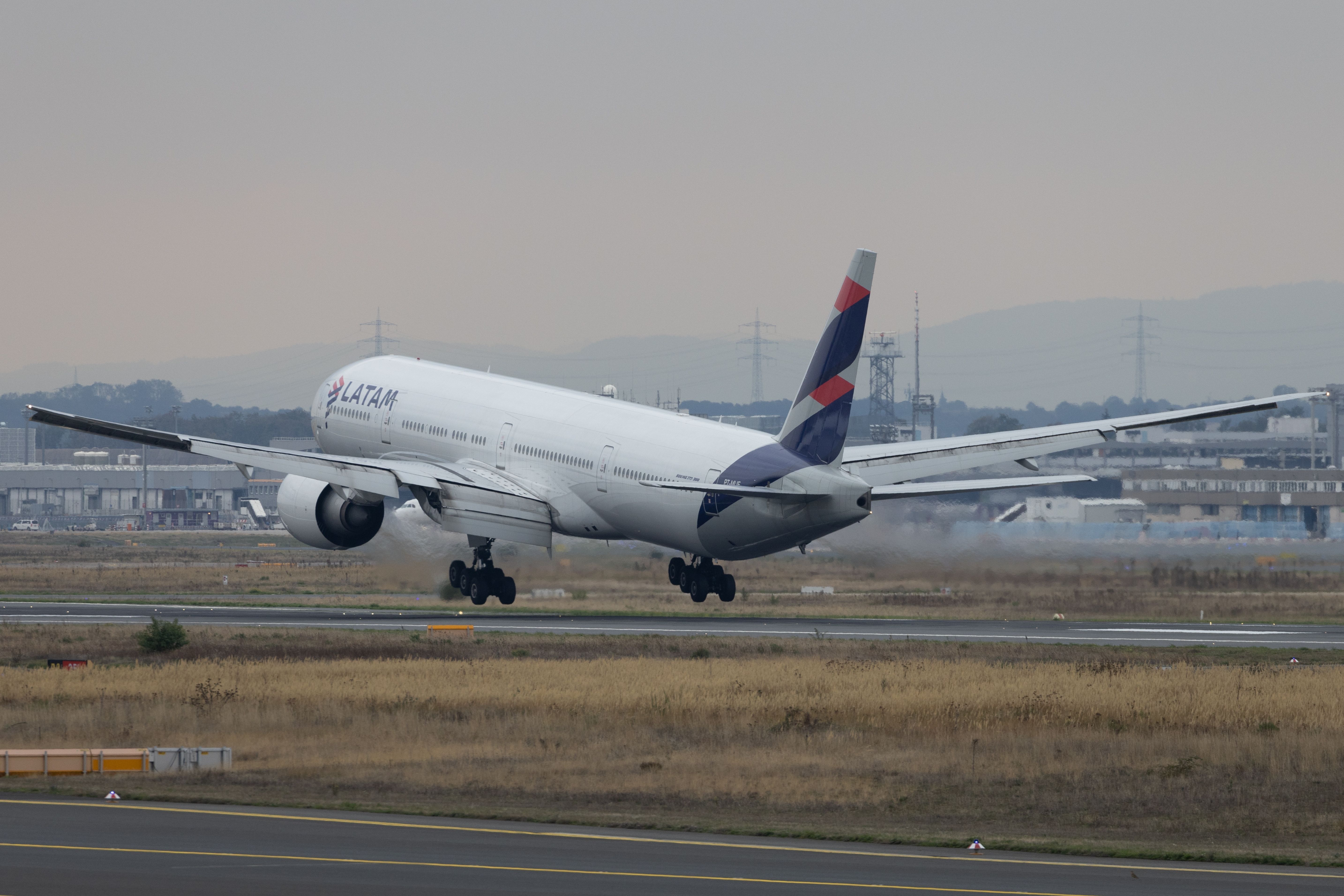Summary Italian investigators have released their preliminary report about a tail strike incident involving a LATAM Airlines Boeing 777-300ER. The incident happened on July 9 and resulted in damage to the aircraft and the runway surface. Following the event, LATAM Airlines' performance calculations indicated that the pilots should have chosen much higher decision, rotation, and takeoff speeds.
The National Agency for the Safety of Flight (Agenzia Nazionale per la Sicurezza del Volo, ANSV) has released its preliminary report about an incident involving a LATAM Airlines Boeing 777-300ER in Milan, Italy. On July 9, the aircraft scrapped the runway for several seconds before finally taking off from Milan Malpensa Airport (MXP). Subsequently, it returned to the same airport before finally being ferried back to Brazil several days after the incident.

Scrapping the runway for 700 meters The LATAM Airlines 777-300ER, registered as PT-MUG, was scheduled to operate flight LA8073 between MXP and São Paulo/Guarulhos–Governor André Franco Montoro International Airport (GRU), with an estimated block time of 11 hours, according to the report. The load sheet for the aircraft stated that the zero fuel weight (ZFW) was 219,460 kilograms (483,826 pounds), the takeoff weight (TOW) was 328,425 kg (724,053 lbs), and the fuel in the tanks was 109,625 kg (241,681 lbs). Onboard the aircraft were three pilots, 12 flight attendants, and 383 passengers, totaling 398 people that were flying on the 777-300ER.
Out of the trio of pilots, the pilot flying (PF) was an instructor captain, while the pilot monitoring (PM) was a captain-in-training, ANSV detailed. Nevertheless, at 11:25:59 local time (UTC +2), the aircraft began its takeoff run. Some 30 seconds later, the PF began pitching up the nose of the 777-300ER to lift it off the runway at a speed of 153 knots.
Five seconds later, while the aircraft’s indicated airspeed (IAS) was 166 kt, the onboard tail strike indicators signals were activated, and at 11:26:49, the 777-300ER departed MXP. “On RWY35L, a footprint was found on the ground (furrow with varying depths of up to 6 cm) of 723 linear meters originating between the DM and DE intersections 2 meters left of the centerline and ending at a point just before the EM intersection 8.5 meters to the left of the centerline.
” A video showed the aircraft scraping its tail on the runway for several seconds before the Boeing 777-300ER lifted off. Turning back to Milan ANSV pointed out that shortly after the aircraft took off from the airport, the cockpit voice recorder (CVR) captured the audible tail strike warning, with MXP’s controllers also warning the pilots about the tail strike. The local air traffic control (ATC) also told the LATAM Airlines pilots about parts that detached from the aircraft following an immediate post-incident runway inspection.
At the time, the flight crew had been in the air and were dumping fuel for their turnback to MXP. In around 32 minutes, the 777-300ER threw out around 72,000 kg (158,732) of fuel before landing at the main airport in Milan, Italy . At 12:36, the LATAM Airlines 777-300ER landed back at MXP, with ANSV noting that the aircraft suffered damage to the tail skid, a drain mast, and a tail strike sensor during the incident.
Regulators have been closely monitoring tail strikes to maintain safe aircraft operations. Post-incident calculations However, the preliminary report detailed that the pilots had entered V1, VR, and V2 as 145 kt, 149 kt, and 156 kt, respectively, onboard the 777-300ER's flight management system (FMS). At the time of the incident, visibility was clear, with wind speeds of 1 kt and the outside temperature being 30°C (86°F), according to a Meteorological Aerodrome Report (METAR) shared by the ANSV.
Following the event, LATAM Airlines did a performance calculation with the onboard performance tool (OTP) with identical TOW and weather conditions. The calculation showed that the V1, VR, and V2 speeds should have been 173 kt, 181 kt, and 186 kt, respectively, which was significantly lower than the decision, rotation, and takeoff speeds that the pilots had entered into the FMS before departing. Flightradar24 data indicated that the 777-300ER returned to Brazil on July 14, five days after the incident.
It has been inactive at GRU since landing at the airport following its ferry flight from Italy. The aircraft has still not returned to service since the January tail strike..



















